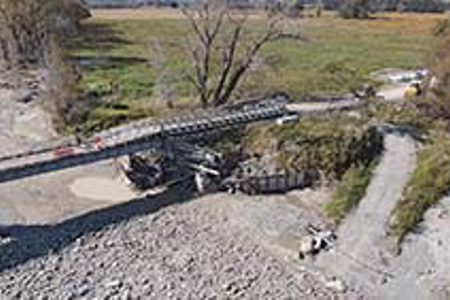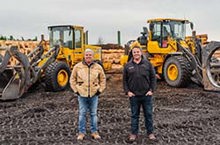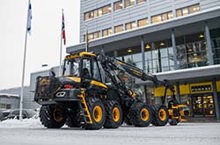
Another Bailey bridge has been successfully installed in Gisborne. The bridge went up on the Makarika No.2 Bridge, Makarika Road, south of Ruatorea. It will allow contractors to clear debris and begin repairs to the abutment under the bridge and the road approaching the bridge.
Community Lifelines Director, Tim Barry, says it will make a huge difference to the community living across the bridge as the Bailey bridge means continued access while the repair work is completed.
“There have been weight restrictions on this bridge since Cyclone Gabrielle due to damage to a pier and the abutment on the Ruatorea side.”
Mr Barry says the Bailey bridge will stay in place for the rest of the year while permanent repairs to the abutment take place.
Heavy vehicles up to 50MAX classification will be able to cross the bridge.
The abutment under Makarika No.2 Bridge had land scoured out from underneath it from the force of the Mata River during Cyclone Gabrielle. A large hole was left at the base, undermining the bridge’s integrity at that point, and the hole was left full of large logs, other wood and debris.
“The Makarika No. 2 Bridge has always been okay. It was issues with a pier and the abutment that led to the weight restrictions. If we did not have this Bailey Bridge in place, we’d have had to close the bridge for months while the abutment repair took place,” says Mr Barry.
He adds that Bailey bridges have been an important part of recovery works within Tairawhiti, enabling access over damaged bridges while investigation and designs are completed.
This is the third Bailey Bridge to be installed by the council after Cyclone Gabrielle.
One was installed at the Mangaheia No.4 bridge on Tauwhareparae Road, and another one was installed at Awatere Bridge while a new pile was installed underneath the bridge.
A Bailey bridge is a type of portable, pre-fabricated, truss bridge. It was developed in 1940–1941 by the British for military use during the Second World War and saw extensive use by British, Canadian and American military engineering units.









